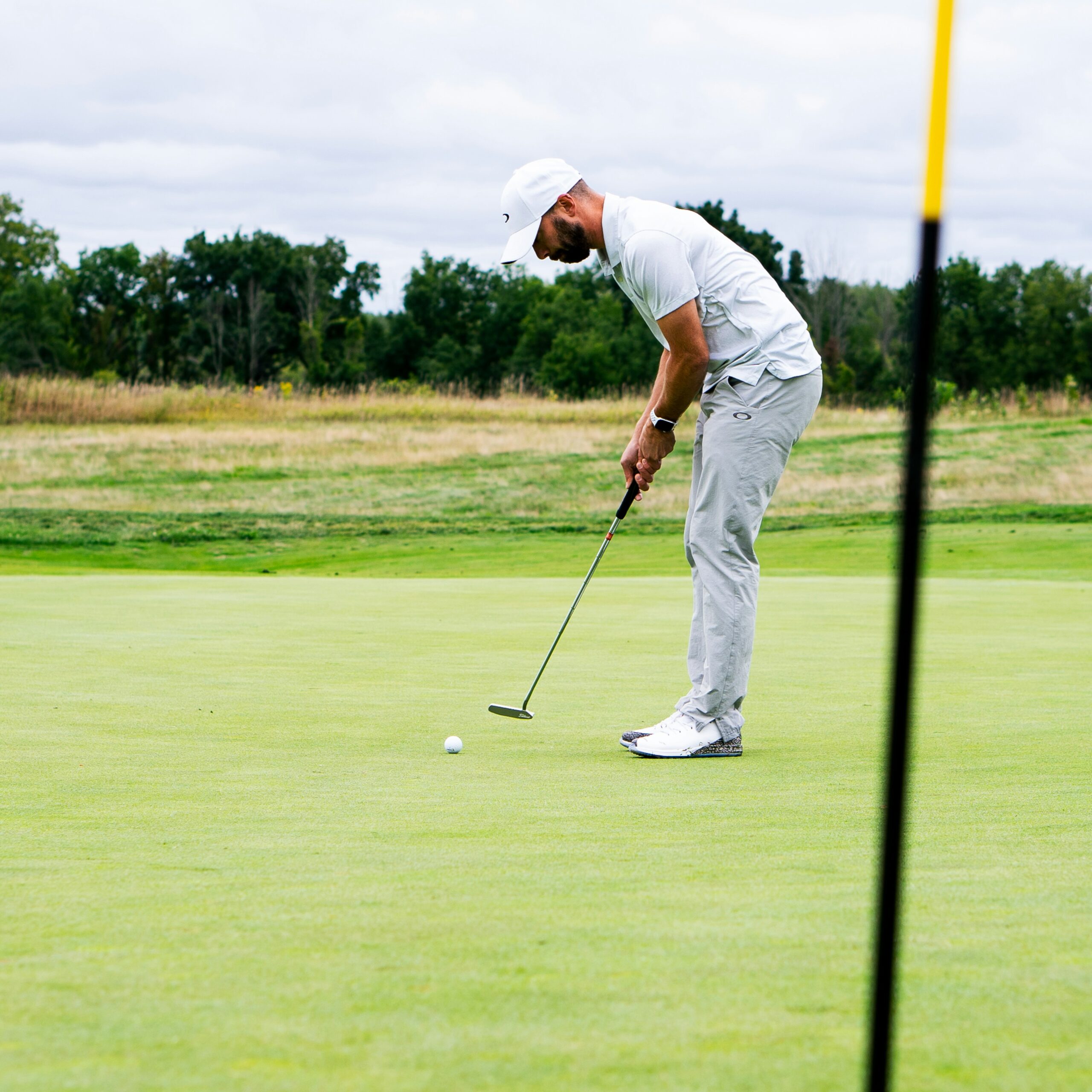Most teenage golfers spend hours hitting drivers and practicing iron shots, but when they get to the green, things go wrong. They three-putt from 12 feet. They miss two-footers. They rush through putts without any plan.
Putting makes up about 40% of all shots in golf, but most players barely practice it. Beginner putting drills for teen golfers can improve accuracy, lower scores, and help players feel more confident on the greens. When teenagers learn good putting basics early, they can rely on their short game instead of worrying about it.
This guide covers drills for building proper form, controlling distance, and handling different situations that teenage golfers will see on any course.
Building the Foundation: Form and Routine
Good putting starts with doing the same thing every time and setting up correctly. Without these basics, even good teenage golfers struggle when they’re nervous.
A pre-putt routine should include the same steps every time: read the green, take practice strokes, set up to the ball, and make the stroke. This routine helps during tournaments when nerves can mess up your timing.
Three drills help with proper form:
Head Against the Wall Drill: Stand with your head touching a wall, then set up in your putting stance. This checks that your head position stays steady during the stroke and your core is activated.
Tail Against the Wall Drill: Set up with your backside against a wall while in putting stance. This ensures your posture stays consistent and you maintain the proper spine angle throughout the stroke.
Putting Mirror Drill: Use a specialized putting mirror (available at golf shops) that has alignment lines and a hole for the ball. Place it under the ball during practice to check that your eyes are directly over the ball and your shoulders are square to your target line.
These drills help you do the same thing every time. When teenage golfers have solid basics, they can focus on reading greens instead of worrying about their setup.
Practicing Aim and Speed Control
Most putting problems come from hitting the ball too hard or too soft, not from misreading which way it will break.
Tees Around the Hole Drill: Place 4-6 tees around a hole in different positions about 4 feet away. Practice making three putts from each tee position. This drill helps with accuracy from different angles.
Three-Foot Tee Line Drill: Set up tees in a straight line at 3, 6, 9, and 12 feet from the hole. Start close and work your way back, focusing on consistent speed rather than just making putts.
Adding Pressure to Your Practice: Make drills harder by requiring consecutive makes before advancing. For example, make 5 putts in a row from 3 feet before moving to 6 feet. If you miss, start over. This creates the same pressure you’ll feel during actual rounds.
For good speed control, hit putts hard enough so they would roll 12-18 inches past the hole if they missed. This gives the ball enough speed to stay on line. Putts that barely reach the hole get knocked off course by bumps in the green.
Short vs. Mid-Range Putt Training
Build confidence by starting close to the hole and gradually moving back. This prevents teenage golfers from getting frustrated with long putts before they can make the short ones.
Short putts (3-4 feet) should go in most of the time. Practice making 10 in a row from different angles before moving to longer distances. The goal is feeling confident that these putts are automatic during rounds.
Mid-range putts (6-10 feet) are different. Instead of trying to make every putt, focus on getting them close enough for easy tap-ins. A putt that stops 18 inches from the hole is better than one that either goes in or rolls 4 feet past.
This approach teaches teenage golfers to be realistic about their skill level while gradually getting better at longer putts.
Adapting to Uphill and Downhill Putts
Most practice greens are flat, but course greens have slopes that change how putts roll. Learning to adjust for uphill and downhill putts is important for consistent scoring.
Uphill putts need firmer strokes because gravity works against the ball. The ball will also break less than it looks because the uphill slope reduces the effect of side slope.
Downhill putts need a softer touch and shorter backstroke to keep control. These putts will break more than they look and can get away from you if you hit them too hard.
Practice both by finding sloped areas on the practice green. Focus on learning how much the slope affects both speed and break. Trust your read and commit to the stroke without changing your mind once you’re set up.
Practical Takeaways for Teen Golfers
Good putting practice needs structure and specific goals rather than just hitting random putts. Track your success rate from different distances to see what needs the most work.
Create pressure during practice by setting targets: make 10 short putts in a row, or get 5 out of 10 mid-range putts within tap-in distance. This builds confidence for similar situations during rounds.
Focus on controlling pace and aim rather than trying to make every putt. Many teenage golfers try too hard to make everything, which leads to poor speed control and longer comeback putts. A putt that finishes near the hole is almost always better than one that races past.
Practice with purpose. Each putting session should have specific goals rather than just hitting balls until you’re tired.
Building Better Putters
Beginner putting drills for teen golfers focus on consistent basics, controlling distance, and handling different green conditions. By starting with proper form and routine, then working through structured drills for various distances and slopes, teenage golfers can make putting a strength instead of a weakness.
The habits from these drills don’t just lower scores—they build confidence that helps in tournaments and pressure situations. When teenage golfers trust their putting, they play better throughout the round because they know they can rely on their short game.
Start with these basics and practice them regularly. You’ll see improvement on your scorecard faster than you might expect.
Want to sharpen your putting and overall golf game? Athletes Untapped is a marketplace that connects athletes with private coaches who specialize in both mechanics and course management. Explore golf coaching options or check out more drills on our golf blog to keep improving.




